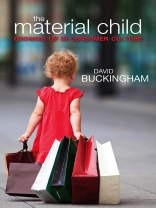Children today are growing up in an increasingly commercialised
world. But should we see them as victims of manipulative marketing,
or as competent participants in consumer culture?
The Material Child provides a comprehensive critical
overview of debates about children’s changing engagement with
the commercial market. It moves from broad overviews of the theory
and history of children’s consumption to insightful case
studies of key areas such as obesity, sexualisation,
children’s broadcasting and education.
In the process, it challenges much of the received wisdom about the
effects of advertising and marketing, arguing for a more balanced
account that locates children’s consumption within a broader
analysis of social relationships, for example within the family and
the peer group. While refuting the popular view of children as
incompetent and vulnerable consumers that is adopted by many
campaigners, it also rejects the easy celebration of consumption as
an expression of children’s power and autonomy.
Written by one of the leading international scholars in the field,
The Material Child will be of interest to students,
researchers and policy-makers, as well as parents, teachers and
others who work directly with children.
Mục lục
Acknowledgments
Preface
1. Exploited or empowered? Constructing the child consumer
2. Understanding consumption
3. The making of consumers: theory and research on children’s
consumption
4. Histories of children’s consumption
5. The contemporary children’s market
6. The fear of fat: obesity, food and consumption
7. Too much, too soon? Marketing, media and the sexualisation of
girls
8. Rethinking ‘pester power’: children, parents and
consumption
9. Beyond ‘peer pressure’: consumption and identity in the
peer group
10. Screening the market: the case of children’s television
11. Consuming to learn – learning to consume: education goes to
market
12. Conclusion: living in a material world
References
Giới thiệu về tác giả
David Buckingham is Professor of Education at the Institute of Education, University of London and Visiting Professor at the Norwegian Centre for Child Research, NTNU Trondheim.












